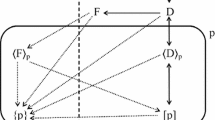Abstract
With many real world decisions being made in conjunction with other decision makers, or single agent decisions having an influence on other members of the decision maker’s immediate entourage, there is strong interest in studying the relative weight assigned to different agents in such contexts. In the present paper, we focus on the case of one member of a two person household being asked to make choices affecting the travel time and salary of both members. We highlight the presence of significant heterogeneity across individuals not just in their underlying sensitivities, but also in the relative weight they assign to their partner, and show how this weight varies across attributes. This is in contrast to existing work which uses weights assigned to individual agents at the level of the overall utility rather than for individual attributes. We also show clear evidence of a risk of confounding between heterogeneity in marginal sensitivities and heterogeneity in the weights assigned to each member. We show how this can lead to misleading model results, and argue that this may also explain past results showing bargaining or weight parameters outside the usual [0,1] range in more traditional joint decision making contexts. In terms of substantive results, we find that male respondents place more weight on their partner’s travel time, while female respondents place more weight on their partner’s salary.


Similar content being viewed by others
Notes
A household containing two individuals, living as partners.
It can be seen that a model with attribute specific λ p parameters is equivalent to a model estimating β 1 and β 2, a point we will return to later in the paper.
We are grateful to an anonymous referee for highlighting this.
The survey thus works with travel time per trip and salary per month. We acknowledge the different units of these two components and the potential shortcomings of this from a microeconomic theory perspective. However, from a behavioural perspective, salary is paid per month and travel time is experienced per journey, and this was the approach taken in the study—see also Swärdh and Algers (2009)
The 2005 exchange is approximately £ 0.07 per SEK1.
We thank an anonymous referee for this comment.
While \(\mu_{\ln(\beta_{f,{\text{L-Sal}}})}\) in Table 2 relates to the mean of the underlying Normal distribution for the salary coefficient for female respondents, μL-Sal represents the resulting mean of the Lognormal distribution, with σL-Sal giving the resulting standard deviation. The means and standard deviations for the Lognormal distribution can be obtained as simple transforms of the parameters for the underlying Normal distribution reported in Table 2, using the formulae reported in Train (2009, page 150).
Looking at model 1, we have that the ratio between the log-salary and time coefficients is equal to 22.69. This then needs to divided by a respondent’s salary to get the implied WTA. For example, the lowest male salary is SEK3,750, giving a willingness to accept 0.006 minutes per additional Krona. For a respondent at the highest male salary, in this case SEK75,000, the WTA is much lower, at 0.0003 minutes per additional Krona.
Note that efforts to study differences between λ TT and λ L-Sal were only moderately successful in models 3 and 4.
References
Adamowicz, W., Hanemann, M., Swait, J., Johnson, R., Layton, D., Regenwetter, M., Reimer, T., Sorkin, R.: Decision strategy and structure in households: a “groups” perspective. Mark. Lett. 16(3/4), 387–399 (2005)
Aribarg, A., Arora, N., Bodur, H.O.: Understanding the role of preference revision and concession in group decisions. J. Mark. Res. 39(3), 336–349 (2002)
Arora, N., Allenby, G.M.: Measuring the influence of individual preference structures in group decision making. J. Mark. Res. 36(4), 476–487 (1999)
Bateman, I., Munro, A.: An experiment on risky choice amongst households. Econ. J. 115(502), C176–C189 (2005)
Beharry-Borg, N., Hensher, D.A., Scarpa, R.: An analytical framework for joint vs separate decisions by couples in choice experiments: the case of coastal water quality in Tobago. Environ. Resour. Econ. 43(1), 95–117 (2009)
Bierlaire, M.: BIOGEME: a free package for the estimation of discrete choice models. Proceedings of the 3rd Swiss transportation research conference, Ascona, Switzerland (2003)
Browning, M., Chiappori, P.A.: Efficient intra-household allocations: a general characterization and empirical tests. Econometrica 66(6), 1241–1278 (1998)
Caussade, S., Ortúzar, J. de D., Rizzi, L., Hensher, D.A.: Assessing the influence of design dimensions on stated choice experiment estimates. Transp. Res. Part B 39(7), 621–640 (2005)
Daly, A.J., Hess, S.: Simple methods for panel data analysis. Paper presented at the 90th Annual Meeting of the Transportation Research Board, Washington, D.C. (2011)
Daly, A., Hess, S., Train, K.: Assuring finite moments for willingness to pay estimates from random coefficients models. Transportation 39(1), 19–31 (2012)
Dellaert, B.G.C., Prodigalidad, M., Louviere, J.J.: Family members’ projections of each other’s preference and influence: a two-stage conjoint approach. Mark. Lett. 9(2), 135–145 (1998)
Dosman, D., Adamowicz, W.: Combining stated and revealed preference data to construct an empirical examination of intrahousehold bargaining. Rev. Econ. Househ. 4(1), 15–34 (2006)
Halton, J.: On the efficiency of certain quasi-random sequences of points in evaluating multi-dimensional integrals. Numerische Mathematik 2, 84–90 (1960)
Hensher, D.A., Rose, J.M., Black, I.: Interactive agency choice in automobile purchase decisions: the role of negotiation in determining equilibrium choice outcomes. J. Transp. Econ. Policy 42(2), 269–296 (2008)
Hess, S., Bierlaire, M., Polak, J.W.: Estimation of value of travel-time savings using mixed logit models. Transp. Res. Part A Policy Pract. 39(2/3), 221–236 (2005)
Katz, E.: The intra-household economics of voice and exit. Fem. Econ. 3(3), 25–46 (1997)
Lampietti, J.: Do husbands and wives make the same choices? Evidence from Northern Ethiopia. Econ. Lett. 62(2), 253–260 (1999)
Marcucci, E., Stathopoulos, A., Rotaris, L., Danielis, R.: Comparing single and joint preferences: a choice experiment on residential location in three member households. Environ. Plan. A 43(5), 1209–1225 (2011)
Munro, A.: Introduction to the special issue: things we do and don’t understand about the household and the environment. Environ. Resour. Econ. 43(1), 1–10 (2009)
Myers, D.G., Lamm, H.: The group polarization phenomenon. Psychol. Bull. 83(4), 602–627 (1976)
Rao, V.R., Steckel, J.H.: A polarization model for describing group preferences. J. Consumer Res. 18(1), 108–118 (1991)
Steckel, J.H., Corfman, K.P., Curry, D.J., Gupta, S., Shanteau, J.: Prospects and problems in modeling group decisions. Mark. Lett. 2(3), 231–240 (1991)
Swärdh, J., Algers, S.: Willingness to accept commuting time for yourself and for your spouse: empirical evidence from Swedish stated preference data. Working Papers 2009:5, Swedish National Road & Transport Research Institute (VTI) (2009)
Train, K.: Discrete choice methods with simulation, Second Edition. Cambridge University Press, Cambridge (2009)
Vermeulen, F.: Collective household models: principles and main results. J. Econ. Surv. 16(4), 533–564 (2002)
Acknowledgements
The authors are indebted to Danny Campbell for important contributions in the early stages of the work leading to this paper, and for his guidance to the first author during her PhD studies. The authors are also grateful to Staffan Algers for making the survey data available, and to Amanda Stathopoulos for translating the survey from Swedish—without their help, this work would not have been possible. The authors would also like to acknowledge the input of Nesha Beharry-Borg in early stages of this research. Earlier versions of this paper were presented at the European Transport Conference 2010 held in Glasgow and the Transportation Research Board (TRB) 91st Annual Meeting 2012 held in Washington, D.C. The authors are grateful for the comments received at these conferences, which provided insightful suggestions for revisions, as well as the comments of three anonymous referees received on an earlier version.
Author information
Authors and Affiliations
Corresponding author
Rights and permissions
About this article
Cite this article
O’Neill, V., Hess, S. Heterogeneity assumptions in the specification of bargaining models: a study of household level trade-offs between commuting time and salary. Transportation 41, 745–763 (2014). https://doi.org/10.1007/s11116-013-9483-4
Published:
Issue Date:
DOI: https://doi.org/10.1007/s11116-013-9483-4




